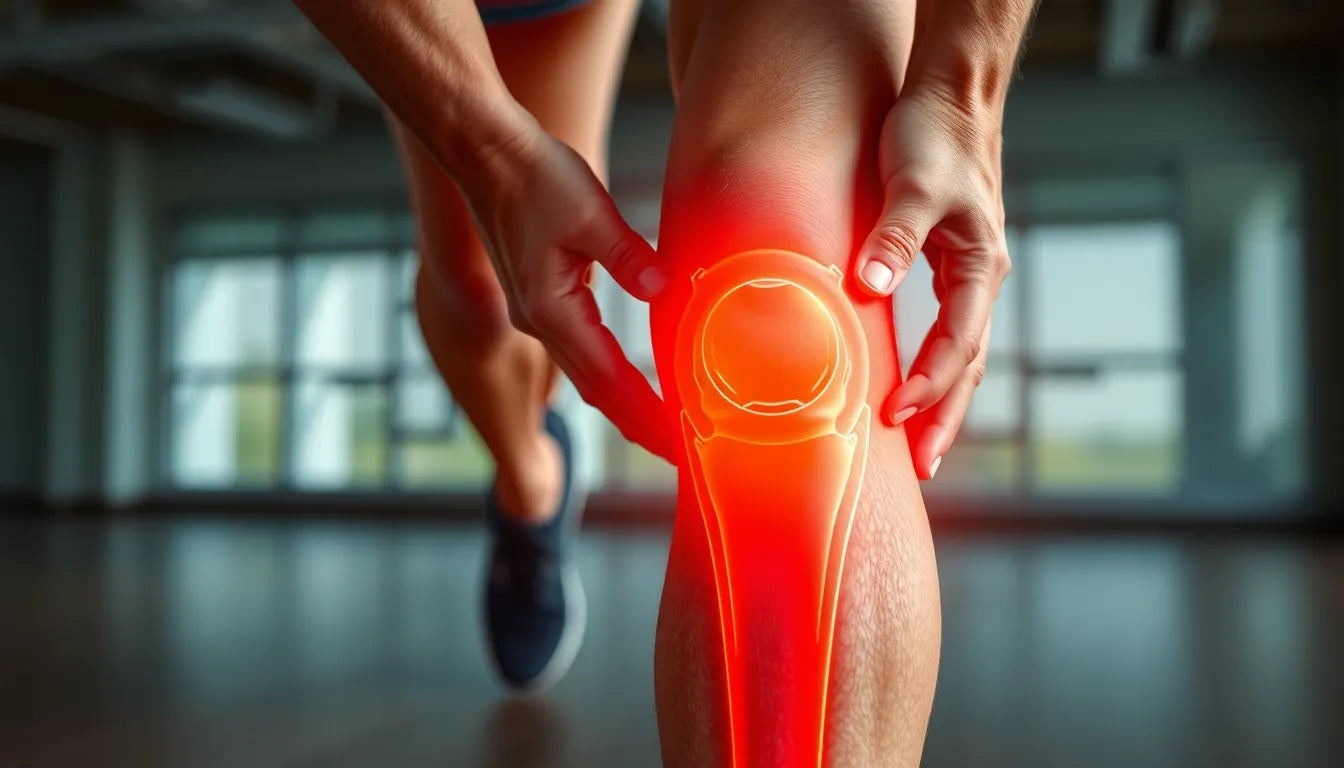Experiencing pain in the buttock, known as "ondt i ballen," is a common issue that can significantly impact daily activities and overall quality of life. This discomfort can arise from various causes, including muscle tension, overuse, and nerve irritation, such as sciatica. Addressing these underlying issues is crucial, as untreated buttock pain can lead to further complications, limiting mobility and increasing discomfort. Fortunately, targeted exercises can play a vital role in alleviating this pain, improving function and enhancing overall well-being.
understanding buttock pain
Buttock pain is often a result of muscle imbalances, prolonged sitting, or repetitive movements that strain the gluteal muscles. Additionally, nerve-related issues, such as sciatica, can cause pain to radiate from the lower back down through the buttocks and legs. Recognizing these potential causes is the first step in effectively managing the pain. Engaging in specific exercises designed to stretch and strengthen the affected areas can help address the root causes of the discomfort, providing both immediate relief and long-term benefits.
the role of exercises in alleviating pain
Incorporating exercises into your routine can significantly reduce buttock pain by targeting the muscles and nerves involved. Stretching exercises help to release tension and improve flexibility, while strengthening exercises build muscle endurance and stability. This dual approach not only alleviates current pain but also helps prevent future occurrences by addressing the underlying causes of the discomfort. Regularly performing these exercises can lead to improved posture, enhanced mobility, and a reduction in pain symptoms, making them an essential component of a comprehensive pain management plan.
why an exercise guide?
Having a structured exercise routine tailored to those experiencing buttock pain is invaluable. This guide serves as a comprehensive resource, offering practical solutions and relief through movement. By following a well-designed exercise program, individuals can systematically address their pain, improving their quality of life. The guide provides clear instructions and variations to accommodate different fitness levels, ensuring that everyone can benefit from these exercises. Whether you're dealing with acute pain or looking to prevent future discomfort, this guide offers the tools needed to effectively manage and alleviate buttock pain through targeted exercises.
causes and symptoms of buttock pain
Buttock pain, often referred to as "ondt i ballen," can stem from a variety of sources, each contributing to the discomfort experienced in this area. One primary cause is muscle overuse, which occurs when the gluteal muscles are subjected to repetitive strain or prolonged periods of inactivity, such as sitting for extended durations. This can lead to muscle tension and imbalances, further exacerbating the pain. Additionally, nerve-related issues, such as sciatica, are common culprits. Sciatica results from irritation or compression of the sciatic nerve, causing pain that radiates from the lower back down through the buttocks and into the legs.
Recognizing the symptoms associated with buttock pain is crucial for effective management. Common symptoms include a dull ache or sharp pain in the buttock region, often accompanied by stiffness and reduced mobility. In cases where nerve irritation is involved, individuals may experience tingling, numbness, or a burning sensation that extends down the leg. Understanding these symptoms and their potential causes can guide individuals in selecting appropriate exercises to alleviate the pain.
effective exercises for buttock pain relief
Incorporating targeted exercises into your routine is an effective strategy for alleviating buttock pain. These exercises focus on stretching and strengthening the muscles, promoting flexibility, and reducing tension. Here are some recommended exercises:
1. Buttock stretch (udstræk af balden)
Begin by lying on your back with your knees bent and feet flat on the ground. Cross one leg over the opposite knee, forming a figure-four shape. Gently pull the thigh of the crossed leg towards your chest, ensuring your back remains flat on the ground. Hold this stretch for 20-30 seconds, feeling a gentle pull in the buttock area. Repeat three times on each side to enhance flexibility and relieve tension.
2. Supine leg stretch (rygliggende benstræk)
Lie on your back with one leg extended and the other bent at the knee. Lift the extended leg towards the ceiling, supporting it under the knee with both hands. Keep your head and back flat on the ground as you hold the stretch for 15-20 seconds. This exercise targets the hamstrings and gluteal muscles, promoting flexibility and reducing discomfort. Repeat on each leg for optimal results.
3. Side-lying knee lift (sideliggende knæløft)
Lie on your side with your knees bent at a 90-degree angle and your head supported by your lower arm. Keeping your feet together, lift the top knee upwards while maintaining stability in the rest of your body. Perform 10 repetitions on each side, three times daily. This exercise strengthens the gluteal muscles, improving stability and reducing pain.
4. Dynamic yoga block exercise
Position yourself on all fours, placing the affected knee on a yoga block. Gently shift your weight onto the knee and rotate your body up and down. Complete 1-2 rounds of 20-30 repetitions. This exercise targets deep muscle activation, enhancing strength and flexibility in the buttock area.
incorporating exercises into daily routine
To maximize the benefits of these exercises, it's important to incorporate them into your daily routine consistently. Start with a few repetitions and gradually increase the intensity and duration as your body adapts. Consistency is key to achieving long-term relief and preventing future occurrences of buttock pain.
Additionally, consider integrating complementary practices such as maintaining proper posture during daily activities and using ergonomic aids to support your efforts. This holistic approach, combined with targeted exercises, can significantly enhance your overall well-being and reduce buttock pain effectively.

Lumbar support belt
Adjustable lower back support belt for relief from pain, sciatica, and tension during daily activities.
enhancing exercise effectiveness for buttock pain relief
To optimize the effectiveness of exercises for alleviating buttock pain, it's essential to complement them with additional practices. Maintaining proper posture throughout daily activities can significantly reduce strain on the gluteal muscles and support the benefits gained from exercise. Ergonomic aids, such as supportive seating and cushions, can further enhance posture and relieve pressure on the buttocks, making these exercises more effective.

Men's Posture Shirt™ - White
Patented posture shirt activates muscles, relieves pain, and improves postural awareness in daily life.
For those experiencing chronic or severe buttock pain, seeking professional guidance is highly recommended. A physiotherapist or healthcare provider can offer personalized exercise plans tailored to your specific needs and conditions. This professional input ensures that exercises are performed correctly and safely, maximizing their potential to relieve pain and prevent future issues.
additional resources and recommendations
To further support your journey in managing buttock pain, consider utilizing multimedia resources such as video demonstrations. These can provide visual guidance on how to perform exercises correctly, ensuring proper form and technique. Many reputable health websites offer free video content that can be a valuable addition to your exercise routine.
Additionally, exploring reputable health sites for further information on buttock pain and its management can provide a broader understanding of the condition. These resources often include expert advice, treatment options, and additional exercises that can complement your current routine. Professional consultations with healthcare providers can also offer tailored advice and recommendations, ensuring a comprehensive approach to managing and alleviating buttock pain.
frequently asked questions
can these exercises be performed daily?
Yes, these exercises are designed to be gentle enough for daily practice. Regular performance can help maintain flexibility and relieve tension.
how soon can I expect to see results?
While some individuals may experience immediate relief, consistent practice over a few weeks is typically necessary for noticeable improvements.
are these exercises suitable for all types of buttock pain?
These exercises are beneficial for muscular-related pain. However, if pain persists or worsens, consulting a healthcare professional is advised.
can I perform these exercises if I have a previous injury?
It is recommended to consult with a healthcare provider before starting any exercise routine if you have a history of injuries to ensure safety and appropriateness.
what if I experience pain during the exercises?
Stop the exercise immediately if you experience pain. Reassess your form, and consider consulting a professional to ensure proper technique.


















